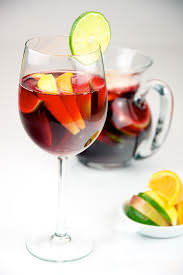Hangover-Free Sangria Your Patrons Will Remember (Fondly)
It’s getting pretty hard to believe these days, but summer is, in fact, on the way – and so the time is almost ripe to be thinking about sangria. While it is true that this drink is often treated by many bars as a simple afterthought (not to mention an easy way to use up leftover wine), you probably should think twice before just throwing together a sweet, wine-based concoction that is sure to earn your establishment a reputation as “that place we went to that one time that made me have the worst hangover of my entire life.” While a lot of different ingredients can go into a batch of sangria, quality does, on some level, count – and any batch that’s just packed with cheap liquor and lots of sugar is bound to be a recipe for a painful next day.
The Wine (and Other Alcohol)
Let’s start with the alcohol – and, where the alcohol is concerned, it makes sense to start with the wine, since it’s the wine that serves as the base of the sangria and gives the drink its color. True, this wine need not be top quality, but for a traditional sangria, it still should be a dry, somewhat full-bodied red that’s reasonably drinkable. To this wine, many people will add gin or vodka, but brandy and triple sec are even more appealing options because of their fruity flavors.
Making it Fruity
At this point, if we stopped here, we would have some pretty deadly stuff on our hands, so now it’s time to thin the mixture back down again, and, going along with the citrus theme, orange juice or San Pellegrino aranciata are definitely far more grown-up choices than lemon-lime soft drinks (or, God forbid, the orange-flavored ones). Some people may prefer grape juice or muddled fruit, however. Of course, there’s a big chance that regardless of which juice you’ve added, the drink – while now carrying a lower alcohol content – might at this point be too sweet, in which case plain soda water can be used temper the sugary taste.
Last but not least, make sure the fruit that you use is freshly chopped to better bring out the wine’s flavor – and also be sure to cut it up into small enough pieces that the those drinking it can enjoy sinking their teeth into the alcohol-infused chunks at the bottom of the glass. For a thoughtful and more sophisticated touch, try to choose seasonal fruits, though, which for the approaching summer is going to mean peaches, berries, and so on. Ideally, you will want to give this whole mixture time to chill together for several hours to allow all of the sweet, fruity, tart flavors to blend together deliciously.
Promote it with Other Spanish Concoctions
If you’re looking for a way to promote your fresh-made sangria (while it still is fresh) or further boost sales, try offering special pairings with bar food such as chorizo, tortilla española, Spanish olives, croquetas, garlic shrimp, calamari, fried squid, or other traditional tapas or Iberian cuisine. After all, sangria is Spanish and Portuguese in origin, so while you’re creating a drink with such integrity, why not go for an even more authentic experience all around? Having something to snack on will reduce the chances of patrons getting a wicked next-day hangover – not that this will be necessary, given how carefully you’ve the time to craft a sangria comprising the finest ingredients.
The red sangria described here is what’s most traditional, but white wine sangria is another fun and refreshing warm-weather alternative. For several great recipes, click here and here. As the popular Spanish toast goes, “¡Arriba, abajo, al centro, pa’ dentro!” Cheers.
- Uncorkd Adds New Vendor Purchasing, Tracking and Reporting Functionality - February 13, 2018
- Uncorkd Adds New Inventory Management Functionality with POS Integration - July 24, 2017
- How Many Red or White Wines Should You Have on Your List - May 3, 2016



